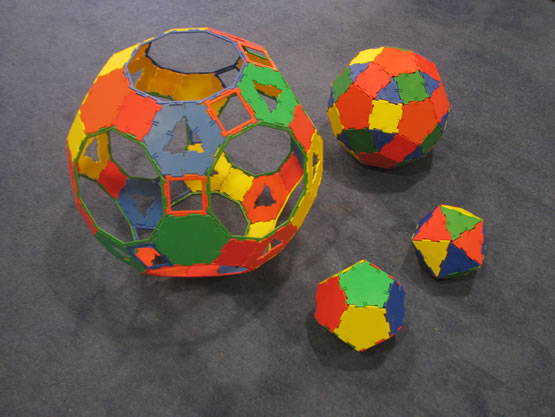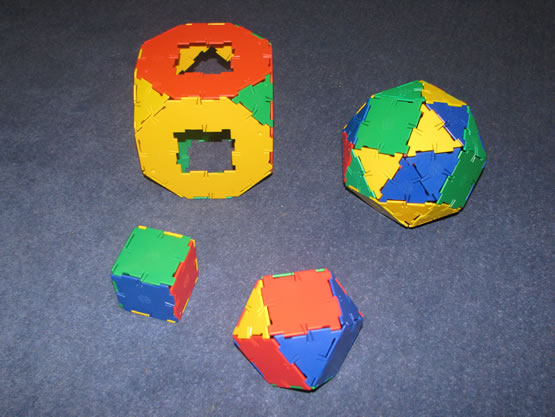Skip over navigation
In a recent workshop, students made these solids.




Can you think of reasons why I might have grouped the solids in the way I have before taking the pictures?
If you want to find out more about these solids, their names and how they were made, you might like to read the article on Angle Deficiency.


Or search by topic
Number and algebra
Geometry and measure
Probability and statistics
Working mathematically
Advanced mathematics
For younger learners
Platonic and Archimedean Solids
Age 7 to 16
Challenge Level 





In a recent workshop, students made these solids.




Can you think of reasons why I might have grouped the solids in the way I have before taking the pictures?
If you want to find out more about these solids, their names and how they were made, you might like to read the article on Angle Deficiency.
You may also like
Proximity
We are given a regular icosahedron having three red vertices. Show that it has a vertex that has at least two red neighbours.
Platonic Planet
Glarsynost lives on a planet whose shape is that of a perfect regular dodecahedron. Can you describe the shortest journey she can make to ensure that she will see every part of the planet?

